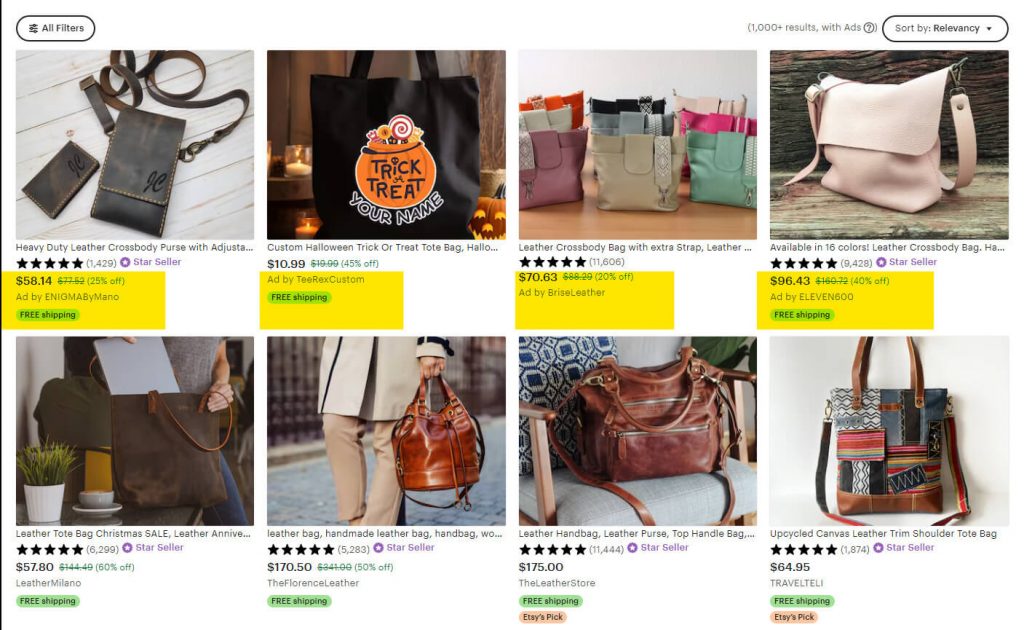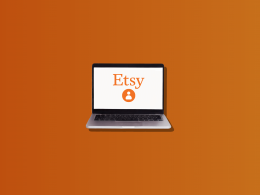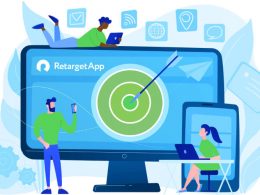Etsy is a well-known name in online sales, as millions of sellers trust in the platform to sell their handmade and vintage products. This popularity has a flip side – the competition is tough due to the sheer number of sellers. One of the most handy ways to stand out often utilized by Etsy merchants is running adverts on the platform with Etsy Ads. However, making sense of Etsy Ads may be a bit of a challenge for newbies.
Want to know more about Etsy Ads and whether Etsy Ads are worth it in the first place? You came to the right place!
Key takeaways:
1. Etsy Ads are a range of advertising tools that are used to enhance the visibility of Etsy product listings, drive traffic to them and increase sales.
2. There are two types of Etsy Ads: onsight ads and offsite ads.
3. Onsite ads charge per click, while offsite ads take a commission only on successful sales, making them cost-effective depending on your product and goals.
Contents:
4. Automated accounting for Etsy fees
5. Conclusion: Are Etsy Ads worth it?
What are Etsy Ads?
Etsy Ads are a set of advertising tools provided by Etsy to help sellers boost the visibility of their products among potential buyers, drive traffic to their shops, and increase sales. These ads allow sellers to promote their item listings both on the Etsy platform (onsite) and across a multitude of external websites and social media networks (offsite).
Sounds easy, right? But there are a few things that you need to understand about how everything works.
How do Etsy Ads work?
While the main difference between onsite and offsite Etsy Ads is where the sellers promote their items, there’s more than meets the eye. Let’s explore how onsite and offsite ads work on the platform.
Etsy onsite ads
Etsy onsite ads are a type of pay-per-click (PPC) advertising designed to help Etsy sellers promote their Etsy listings directly within the vast Etsy marketplace. You’ll notice these ads when you do organic search on the platform—if you see ‘Ad by…’ on a listing, that’s an onsite paid ad.
Here’s how Etsy onsite ads look:

These on site ads work on a keyword bidding system, which means sellers do keyword research and then bid on keywords to make their products more visible in search results, category pages, and other key spots on the Etsy platform.
Etsy onsite ads: Key features
| Pay-Per-Click (PPC) model | Sellers only get charged when someone actually clicks on their ad. This way, you’re only paying for real engagement. |
| Daily budget | Sellers can set a daily max budget for their ads, so they always know exactly how much they’re spending, and Etsy won’t go over it. |
| Ad placement | Onsite ads appear in several key locations on Etsy, including search results, category pages, Etsy home page. |
| Quality score | Etsy gives each specific listing a quality score based on things like relevance, photos, and descriptions. Listings with higher quality scores are more likely to show up in ad placements, even if their bid is lower than others. |
| Customization | Sellers can pick which listings they want to promote and group them into targeted ad campaigns. |
| Performance tracking | Sellers can keep an eye on how their Etsy onsite ads are doing by checking the Stats section in the Shop Manager. From there, they can track clicks, conversions, and their return on investment (ROI). |
Etsy offsite ads
Just as their name suggests, Etsy offsite ads help promote your listings on external websites and social media platforms outside of Etsy. The best part is that you only pay a commission on successful Etsy ads, i.e. when someone buys your product through one of these offsite ads.
Offsite ads: Key features
| Commission-based model | Sellers only pay for ads that actually lead to sales. |
| Automatic enrollment | All Etsy sellers are automatically signed up for offsite ads. If you’ve made less than $10,000 in sales over the past year, you can choose to opt out. But if your sales are over $10,000, you have to participate. |
| Ad platforms | Offsite ads are displayed across a wide range of external platforms, including Google and the Google Display Network (YouTube, Weather.com, Zillow, Gmail, AOL, and MSN, and other sites), Bing, Facebook, Instagram, Pinterest, Etsy Partner Publishing sites (Martha Stewart, Buzzfeed, Real Simple, Better Homes and Gardens, MyWedding, Lyst, Shape).* This significantly expands your reach to potential customer base, which can also affect your Etsy product pricing strategy as you adjust to different markets and customer demands.. |
| Ad selection | Etsy’s algorithm decides which listings to promote based on things like listing quality and performance. Sellers don’t have direct control over which specific items get chosen for offsite ads. |
| Performance tracking | Sellers can track their offsite ads’ performance in their Shop Manager. The Stats section lets them see sales generated from offsite ads and understand the overall impact of their ad campaign. |
Note: Each platform in the offsite ad channels list has its own rules about which listings can appear there. These rules can be stricter than Etsy’s, especially when it comes to mature or prohibited items.
How much do Etsy Ads cost?
As we said earlier, when it comes to Etsy’s onsite ads, you pay whenever someone clicks on your listing ad. This is known as cost-per-click (CPC). In other words, you’re not charged for views or sales, just clicks. On average, most sellers on Etsy use a moderate approach and pay between $0.20 and $0.50 per click.
And as you remember, for offsite ads, you only pay when someone actually buys your product after clicking on the ad. The commission fee is based on your total sales over the past 365 days. If you’ve made less than $10,000 in sales, you pay a 15% commission. If your sales are over $10,000, the commission drops to 12%.
If your shop uses a currency other than USD, Etsy calculates your total revenue by converting your sales to USD based on the exchange rates at the time of each sale.
There’s a cap too—no matter what, you won’t pay more than $100 per sale. Keep in mind, this commission fee is paid on top of the usual transaction fee, listing fee, and Etsy Payment fee.
Transaction fee, listing fee – do you know all of the fees for Etsy? Check out what Etsy seller fees you have to keep in mind in 2025.
Automated accounting for Etsy fees
Etsy deducts various fees before the money reaches your bank account, and manually tracking these can be a hassle and prone to mistakes. Using an automation tool like Synder can streamline this process by syncing your Etsy account with your bookkeeping software.
How Synder helps:
- Integration: Connects your Etsy account with platforms like Etsy Payments, Square, PayPal, Stripe, etc.; supports over 30 integrations and syncs with QuickBooks, Xero, and Sage Intacct.
- Automatic fee allocation: Automatically records fees in the correct expense accounts, and categorizes them for tax purposes.
- Reconciliation: Automates account reconciliation and financial statement creation.
- Tax recording: Automatically records taxes on service fees and sales tax, ensuring accurate bookkeeping.
Synder saves you time, reduces errors, and keeps your bookkeeping accurate and compliant by automating the tracking of Etsy fees and Etsy sales data.
Conclusion: Are Etsy Ads worth it?
The answer depends on what you’re selling and your goals. Using both types of Etsy Ads to promote your product listings does more than just boost sales. It also spreads the word about your brand and Etsy shop, helping to build your reputation on Etsy and beyond.
Onsite ads charge you only when someone clicks on your ad, making them a cost-effective way to attract interested buyers. They’re especially useful for higher-priced items where the ad fees won’t eat into your profits too much. Ad spend in this case is rational.
Off site Etsy ads, meanwhile, promote your Etsy listings on major external sites like Google, Facebook, and Instagram. You only pay a commission when someone buys your product through these ads, which means you’re paying for actual sales you make in your Etsy ads campaign.
If you’re selling popular items and finding it hard to rank high organically with keywords, using paid ads can give you a significant boost in exposure. Established shops often have an edge as they rely on their customer base, but if you’re just starting out or sell new products and want to get noticed, paid ads can help you stand out and build recognition on the Etsy platform.
In the end, you’ll need to experiment and see what works best for you. By tracking your ad performance and tweaking your strategy, you can make the most out of Etsy Ads and achieve your sales goals. So, give Etsy advertising a try and see if it helps your shop grow!
Share your thoughts
What’s your experience with Etsy Ads? Do you find onsite or offsite ads more effective? Share in the comments below!






